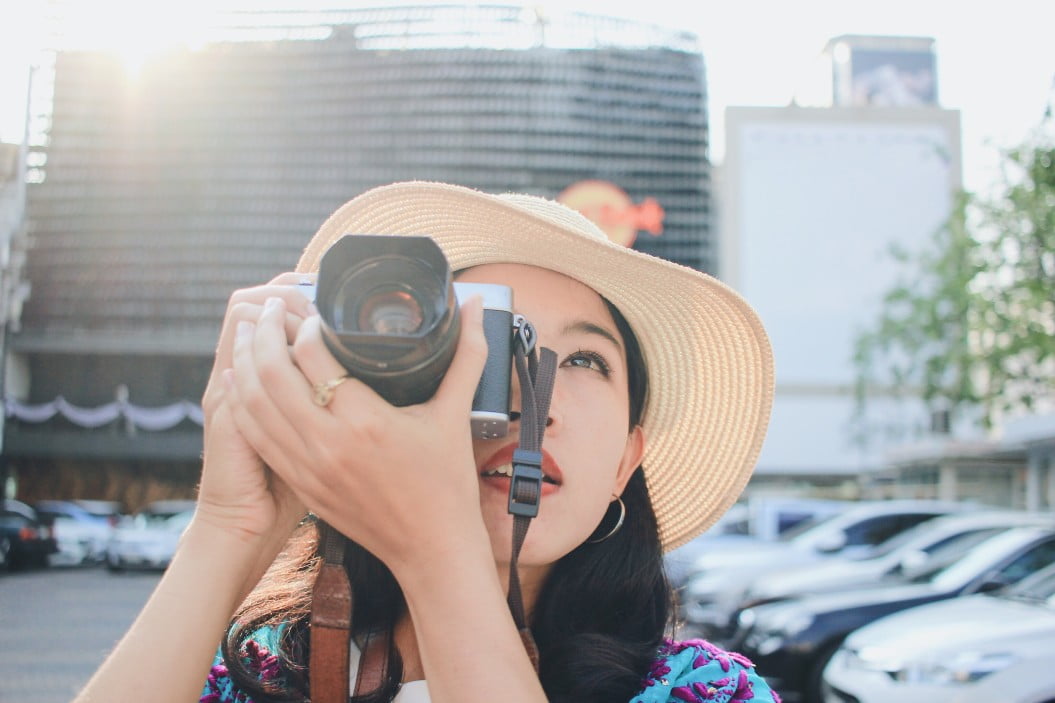If you are beginning to explore the various features of a digicam, you may be wondering what is ISO in a digital camera. The best digital cameras allow ISO adjustment, after all. Keep reading to find out.
KEY TAKEAWAYS:
- ISO is a standard set forth by a measurement committee called the International Organization for Standardization.
- ISO speed refers to how sensitive your camera is to incoming light when it comes to exposure.
- Most modern digital cameras have a minimum ISO speed of 50, 100, or 200. The lower the ISO setting, the less light will be allowed through to the digital sensors.
What is ISO?
ISO stands for the International Organization for Standardization, which is an organization that sets international standards for all different kinds of measurements. What does this have to do with your camera? With regard to digital photography, the ISO setting is a measurement of just how sensitive your camera’s image sensor is to light.
Insider Tip
ISO speeds can rocket all the way up to 6,400 in some of the newer digital cameras out there.
How Does ISO Speed Work?
It’s fairly simple. The lower you set your ISO speed, the less sensitive it will be to light. The lowest setting of most modern digital cameras is 50, 100, or 200. On the contrary, setting your ISO speed to its highest settings will allow in the maximum amount of light, impacting image quality, noise levels, depth of field, and more.
Tips for Adjusting ISO Speed
Each camera is different, but here are some universal tips to consider as you go about mastering the art of ISO speed adjustment so you can get the best image quality. Also, you can find out what is hdr for digital camera if you want a good quality camera.
Dive Into the Settings
ISO speed is part of something called the exposure triangle, which is a trio of settings that allow for sharp images and great exposures. Along with ISO speed, shutter speed, and aperture complete this exposure triangle. You can dive into your camera’s settings menu and experiment with different settings of all three of these adjustment variables to see which gives you the best exposure and the sharpest image. Many of these settings can be adjusted on the fly, if you are wondering what is the live view mode on a digital camera and whether it can be useful in this regard.
Auto ISO
If you are using your camera’s aperture priority mode, program mode, or shutter priority mode, you will be able to automatically adjust the ISO. However, many cameras include an auto ISO functionality, which will handle all of the heavy lifting for you. This mode is generally considered to be for beginners, as it will limit the types of shots you will be able to get.
Warning
Enabling auto ISO will disallow certain creative techniques, such as the bokeh effect.
F.A.Q.
How does ISO affect image quality and noise?
It’s a balancing act. Allowing in more light can create noise but it can also result in sharp image quality. Adjusting the depth of field can also impact both metrics, as can choosing a faster shutter speed or a slower shutter speed.
What ISO setting should I use?
If you are looking for correct exposure, you may have to experiment with the ISO values, as other conditions play a part. The light conditions, for instance, and if you are using a slow shutter speed and whether or not you have a larger sensor.
What is auto ISO?
Auto ISO or automatic ISO is a functionality by which the camera adjusts the ISO speed on its own.
STAT: The first known practical sensitometer, which allowed measurements of the speed of photographic materials, was invented by the Polish engineer Leon Warnerke, pseudonym of Władysław Małachowski in 1880. (source)



































![Best Point and Shoot Camera in [year] ([month] Reviews) 27 Best Point and Shoot Camera in 2026 (January Reviews)](https://www.gadgetreview.dev/wp-content/uploads/Nikon-Coolpix-B500.jpg)
![Best Underwater Camera in [year] ([month] Reviews) 28 Best Underwater Camera in 2026 (January Reviews)](https://www.gadgetreview.dev/wp-content/uploads/best-underwater-camera-image.jpg)
![Best Digital Cameras in [year] ([month] Reviews) 29 Best Digital Cameras in 2026 (January Reviews)](https://www.gadgetreview.dev/wp-content/uploads/what-is-resolution-on-digital-camera-1.jpg)
![Best Digital Camera Docking Stations in [year] 30 Best Digital Camera Docking Stations in 2026](https://www.gadgetreview.dev/wp-content/uploads/best-digital-camera-docking-stations-image.jpg)
![Best Vlogging Camera in [year] ([month] Reviews) 31 Best Vlogging Camera in 2026 (January Reviews)](https://www.gadgetreview.dev/wp-content/uploads/best-vlogging-camera-image.jpg)
![Best Mirrorless Camera in [year] ([month] Reviews) 32 Best Mirrorless Camera in 2026 (January Reviews)](https://www.gadgetreview.dev/wp-content/uploads/best-mirrorless-camera-image.jpg)
![Best GoPro in [year] ([month] Reviews) 33 Best GoPro in 2026 (January Reviews)](https://www.gadgetreview.dev/wp-content/uploads/best-gopro-image.jpg)
![Best Digital Camera Tripods in [year] 34 Best Digital Camera Tripods in 2026](https://www.gadgetreview.dev/wp-content/uploads/best-digital-camera-tripods-image.jpg)
![Best Canon Digital Cameras in [year] 35 Best Canon Digital Cameras in 2026](https://www.gadgetreview.dev/wp-content/uploads/best-canon-digital-cameras-image.jpg)
![Best Polaroid Digital Cameras in [year] 36 Best Polaroid Digital Cameras in 2026](https://www.gadgetreview.dev/wp-content/uploads/best-polaroid-digital-cameras-image.jpg)
![Best Small Digital Camera Cases in [year] 37 Best Small Digital Camera Cases in 2026](https://www.gadgetreview.dev/wp-content/uploads/best-small-digital-camera-case-image.jpg)
![Best Digital Camera USB Cables in [year] 38 Best Digital Camera USB Cables in 2026](https://www.gadgetreview.dev/wp-content/uploads/best-digital-camera-usb-cable-image.jpg)
![Best Digital Camera Bags in [year] 39 Best Digital Camera Bags in 2026](https://www.gadgetreview.dev/wp-content/uploads/best-digital-camera-bag-image.jpg)
![Best Sony Digital Cameras in [year] 40 Best Sony Digital Cameras in 2026](https://www.gadgetreview.dev/wp-content/uploads/best-sony-digital-cameras-image.jpg)
![Best Panasonic Digital Cameras in [year] 41 Best Panasonic Digital Cameras in 2026](https://www.gadgetreview.dev/wp-content/uploads/best-panasonic-digital-cameras-image.jpg)
![Best Digital Camera Accessories in [year] 42 Best Digital Camera Accessories in 2026](https://www.gadgetreview.dev/wp-content/uploads/best-digital-camera-accessories-image.jpg)
![Best Kodak Digital Cameras in [year] 43 Best Kodak Digital Cameras in 2026](https://www.gadgetreview.dev/wp-content/uploads/best-kodak-digital-cameras-images.jpg)
![Best Video Cameras in [year] ([month] Reviews) 44 Best Video Cameras in 2026 (January Reviews)](https://www.gadgetreview.dev/wp-content/uploads/best-video-cameras-image.jpg)
![Best Compact Cameras in [year] 45 Best Compact Cameras in 2026](https://www.gadgetreview.dev/wp-content/uploads/best-compact-camera-image.jpg)
![Best Digital Cameras with Wifi in [year] 46 Best Digital Cameras with Wifi in 2026](https://www.gadgetreview.dev/wp-content/uploads/best-digital-camera-with-wifi-image.jpg)



















